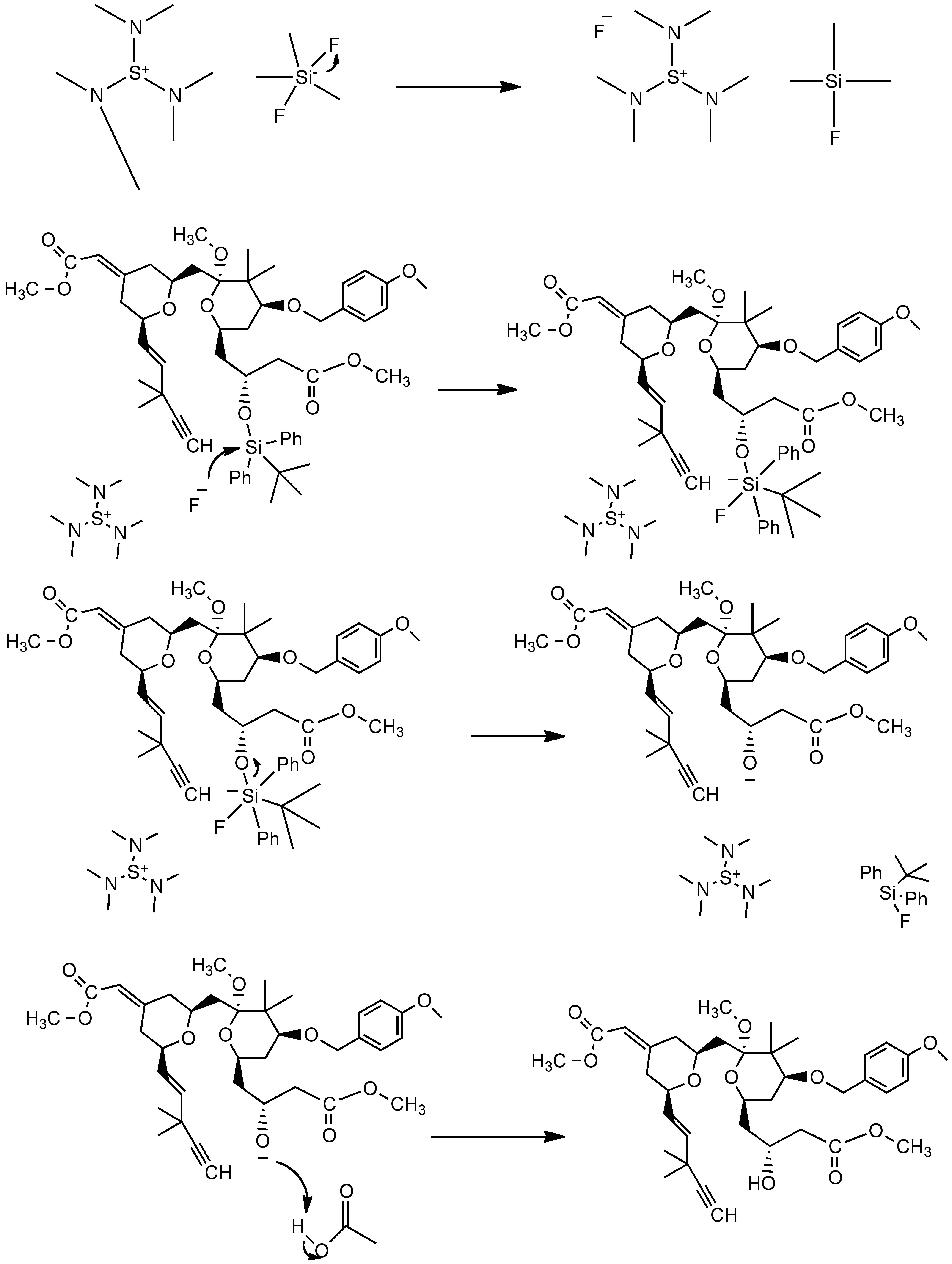Mechanism of the Ohira-Bestmann reagent
The Ohira-Bestmann reagent (also known as dimethyl (1-diazo-2-oxopropyl) phosphonate) is the Ohira-Bestmann modification of the Seyferth-Gilbert Homologation, allowing enolizable aldehydes to be transformed into alkynes under relatively mild reaction conditions (while under the Seyferth-Gilbert Homologation they would undergo aldol condensation). In fact, this reagent gives high yields of terminal alkenes. In our reaction, it is used in the first step to transform an aldehyde into a terminal alkyne, which is followed by a deprotection step. As the reagent is a modification of the previously mentioned homologation, the mechanism is related. First, the reagent becomes deprotonated through reaction with methanol and potassium carbonate. The deprotonated reagent adds to the carbonyl compound forming an alkoxide, which closes to form an oxaphosphetane, which is essentially a four membered ring. A cycloelimination occurs, similar to the Wittig reaction, yielding a dimethyl phosphate anion and a diazoalkene. Nitrogen is then lost at room temperature, creating a carbene that forms an alkyne after a 1,2 migration of the substituents.
Comparing References
Ohira, S; Synth. Commun. 1989. 19, 561-564.
This was the first article that reported the conversion of an n-alkyl aldehyde under basic methanolysis of the reagent. Bestmann later examined Ohira’s work and refined it to create the Ohira-Bestmann reagent.
Müller, S.; Liepold, B.; Roth, G.; Bestmann, H. J. Synthesis. 2004. 1, 67-72
Müller, S.; Liepold, B.; Roth, G.; Bestmann, H. J. Synlett. 1996. 6, 521-522
New Mechanism: First Step remains the same
